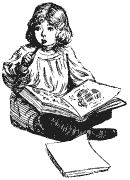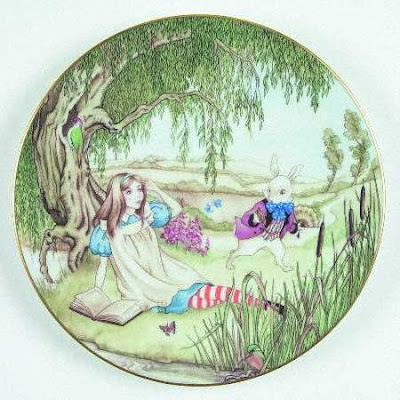
Wednesday, October 29, 2008
Believing in the Impossible

Saturday, October 25, 2008
Inspired by "My Book and Heart Shall Never Part"

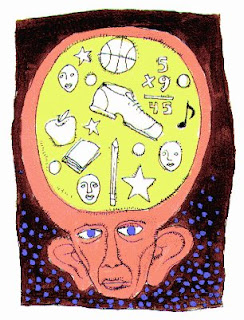 Memory in Wordsworth's Ode: Intimations of Immortality says"William Wordsworth uses memory as a connective force between past and present, one’s ability to recall the joy of one’s past in order to, not know that it exists now, but find peace in the knowledge that it once existed. In this sense, according to Wordsworth’s poem, memory provides a form of recollection of a glorious beginning to life that passes away into commonalities as we age and mature."
Memory in Wordsworth's Ode: Intimations of Immortality says"William Wordsworth uses memory as a connective force between past and present, one’s ability to recall the joy of one’s past in order to, not know that it exists now, but find peace in the knowledge that it once existed. In this sense, according to Wordsworth’s poem, memory provides a form of recollection of a glorious beginning to life that passes away into commonalities as we age and mature." And memory is always recollected back to Mnemosyne who was the Titan goddess of memory and remembrance and the inventress of language and words.
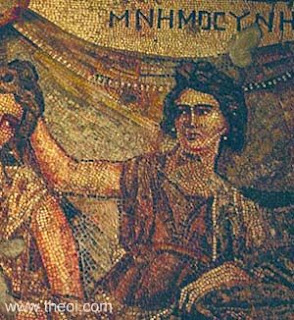
Monday, October 20, 2008
Is there such a thing as children's literature?

watercolor by Ben Clanton
So then it brings me to Sutter's question in class today: "Is there such thing as a child?" Today Dr. Sexson discussed rites of passage in tribes and that is the event of a child ceremoniously, physically(circumcision), and literally leaving the world of children and becoming an adult. But then again the question of "is there such thing as a child?" becomes more than thinkable. The suggestion that literacy is one of the worst things that has happened to human kind is a reasonable one because we have forced ourselves to skip childhood by becoming literate. Then encouraging children to learn and read is robbing them of something great because we think we know best. This makes me think of The Golden Compass and how children are being severed from their deamons because the adults/church knows best.
Saturday, October 18, 2008
Cinderella
 I read The Second Shepherds' Pageant (Wakefield) for my Medieval Literature class and I found something in the reading that made me think of Cinderella, and I wonder how far back the ideas for fairy tales go. The beginning of the Second Shepherds play starts with three shepherds, then this guy Mak steals a sheep, then the shepherds look for the sheep at Mak's house and Mak and his wife have the sheep swaddled like a baby as a disguise, well anyway, to make this story short the shepherds are the holy fools and can't tell it's a sheep for a while, but then they start to look closer and see that he has horns, and a long snout, and Mak's wife says to them :
I read The Second Shepherds' Pageant (Wakefield) for my Medieval Literature class and I found something in the reading that made me think of Cinderella, and I wonder how far back the ideas for fairy tales go. The beginning of the Second Shepherds play starts with three shepherds, then this guy Mak steals a sheep, then the shepherds look for the sheep at Mak's house and Mak and his wife have the sheep swaddled like a baby as a disguise, well anyway, to make this story short the shepherds are the holy fools and can't tell it's a sheep for a while, but then they start to look closer and see that he has horns, and a long snout, and Mak's wife says to them : 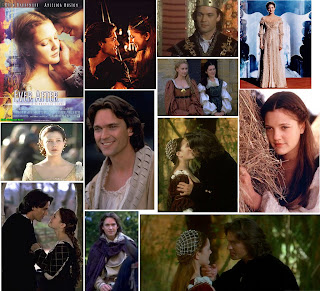
Friday, October 10, 2008
Test Time!
Test Questions made from the class:
- Portmanteau = a multilevel word used in Finnegan's Wake ex: Prank Quean, another example is from Alice and Wonderland ex: slithy, which is a combination of sly and slimey
- privilaged #s in fairytales 3 & 7
- What is misplaced concreteness? ex: Rapunzel's hair and whether or not it can really hold up a human, which according to what Erin found and put in her blog, the answer is yes
- Which fairytale is type 333 according to Arny Thompson's classification? Answer: Little Red Riding Hood
- How do we get to the collective unconcious through fairytales? Answer: architypes
- Identify this quote: "if you're really crafty you'll get them both" - the wolf in Little Red Riding Hood
- What are the 3 parts of the universal quest? Answer: seperation, initiation, return
- What are the three parts of the Triple goddess? Answer: Maiden, Mother, Crone
- Why is there no original literature? Answer: all lit. is displaced myth
- When you bow to someone, what are you recognizing within them? Answer: the divine
- The genie says in Disney's Aladdin: I'm not history, I'm mythology
- What is Cideneralla's name in the Grimm version of this fairy tale? Answer: Ashgirl
- ***there will be more questions on the test dealing with differences between versions of fairytales
- According to the motif index Hans My Hedgehog, Beauty and the Beast, and East of the Sun, West of the Moon are what motif? Answer: the search for the missing husband/beast groom
- Out of Rapunzel, Bluebeard, The Juniper Tree, and Snow White, which fairytale has no struggle to concieve? Answer: Bluebeard
- What is the mother/daughter duo? Answer: Demeter and Persephone
- Write a haiku on one fairytale we were assigned to know for the test. For those of you who aren't aware or can't remember a haiku is a 3 line poem with generally 5-7-5 syllable pattern. Haiku's are generally imagistic, however I don't think you have to worry too much about that.
- What is the significance of blue in Bluebeard's beard? Answer: d. all of the above
- What triggers the transformation of the beast back into a human? Answer: Love
- The architype for a talking animal, like Mr. Ed, can be found in which ancient work of literature? Answer: The Golden Ass
- Why did Cupid wake up when psyche was looking at him? Answer: A drop of hot oil landed on his shoulder
- What do you call an error in speach or a deliberate word play like sisty uglers or bleeping sleauty? Answer: spoonerisms
- Which romantic poet believed we do not learn new things, but we just need to be reminded of them because we already know everything? Answer: William Wordsworth
- What mythical story was Beauty and the Beast supposedly derived from? Answer: Cupid and Psyche
- The moral of Bluebeard had to do with a flaw in which gender? Answer: female....curious female, because women are full of sin thanks to Eve
- Which Grimm story has a witch in it? Answer: Hansel and Gretal, witches aren't common in Grimm fairytales
- Which author wanted to marry Little Red Riding Hood? Answer: Dr. Sexson, or Katie Crystal, but the author we talked about in class was Charles Dickens
- What phrase begins most fairytales? Answer: I won't dignify this with an answer, it's too damn easy
- There will be a question that will be answered with Ewe, but to be honest I didn't understand what was going on and I don't remember the story Dr. Sexson was talking about, hopefully someone else puts somthing more clear on their blog.
- There will also be an essay, though not very long
Fairytales that we are responsible for knowing:
- Little Mermaid
- Little Red Riding Hood
- Cinderella
- Hansel and Gretal
- Beauty and the Beast
- Bleeping Sleauty..I mean Sleeping Beauty of course, I had to slip in the spoonerism
- Snow White
- Rapunzel
- East of the Sun, West of the Moon
- Bluebeard
- The Juniper Tree
We should know what we said about these fairytales in class and what Tatar has to say about them. Also don't forget to know the difference between these tales and the Grimm fairytales.
Good luck to us!
Saturday, October 4, 2008
anti-intellectualism and What is a child? What is nature? What is a book?
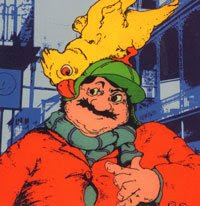 Class on September 17th brought about the discussion of anger towards smart people. Sutter takes us back to some quotes in his blog post, The Learning Curve, by Dr. Sexson who joked about losing friends when they catch just a whiff of your brilliancy and intelligence.
Class on September 17th brought about the discussion of anger towards smart people. Sutter takes us back to some quotes in his blog post, The Learning Curve, by Dr. Sexson who joked about losing friends when they catch just a whiff of your brilliancy and intelligence.Sutter has many other interesting points in his blog post, The learning Curve, and says that Adults and teachers become molders of the child and builds it's phsychic life and by doing that adults claim the divine power making themselves gods. Read more of his blog to get the full story.
This concept of people trying to be like gods reminded me of Samuel Coleridge and his view of the eternal act of creation. Perceiving the world is like creating the world for ourselves, but didn't God create the world, so then humans become like little gods in that sense. I think humans are all trying to have that power by manipulating everything they have a hard time  understanding. Sutter talks about children being molded and manipulated by adults. Don't we do this to nature as well? Moving it, destroying it, rebuilding it. Feminist literary criticism suggests nature is womanly because it is deemed mother nature and men conquer nature and men conquer women, however this seems extreme, but it does reinforce how humans try to conquer and manipulate nature. We try to percieve and recreate nature because, as Sir Phillip Sidney believes that nature's world is brazen, but the poetry world is golden because it improves on what is real. There we go percieving and creating again, but it is so fun. We can manipulate books as well by construing a meaning from them and twisting it making it work for our purposes. The author works it for his or her own purpose. I don't mean to say there is anything wrong with manipulating children, nature, or literature, or maybe there is something wrong in it, but we do it. All three of these things must be more than thinkable to give themselves a future.
understanding. Sutter talks about children being molded and manipulated by adults. Don't we do this to nature as well? Moving it, destroying it, rebuilding it. Feminist literary criticism suggests nature is womanly because it is deemed mother nature and men conquer nature and men conquer women, however this seems extreme, but it does reinforce how humans try to conquer and manipulate nature. We try to percieve and recreate nature because, as Sir Phillip Sidney believes that nature's world is brazen, but the poetry world is golden because it improves on what is real. There we go percieving and creating again, but it is so fun. We can manipulate books as well by construing a meaning from them and twisting it making it work for our purposes. The author works it for his or her own purpose. I don't mean to say there is anything wrong with manipulating children, nature, or literature, or maybe there is something wrong in it, but we do it. All three of these things must be more than thinkable to give themselves a future.
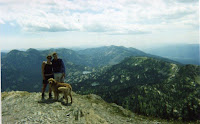 Now we get to the painfully straightforward questions: what is a child? what is nature? What is a book? All of these things have the beginning of life. A child is a new human, nature creates itself anew each year, and books make the old new, and as Percy Shelley said, restoring the vital metaphoricity of our language by creating new associations...new metaphors. All three of these concepts make the world as if it were fresh and new. And all three can be manipulated, and adults like to manipulate them. Could they manipulate adults? I don't see why not.
Now we get to the painfully straightforward questions: what is a child? what is nature? What is a book? All of these things have the beginning of life. A child is a new human, nature creates itself anew each year, and books make the old new, and as Percy Shelley said, restoring the vital metaphoricity of our language by creating new associations...new metaphors. All three of these concepts make the world as if it were fresh and new. And all three can be manipulated, and adults like to manipulate them. Could they manipulate adults? I don't see why not.